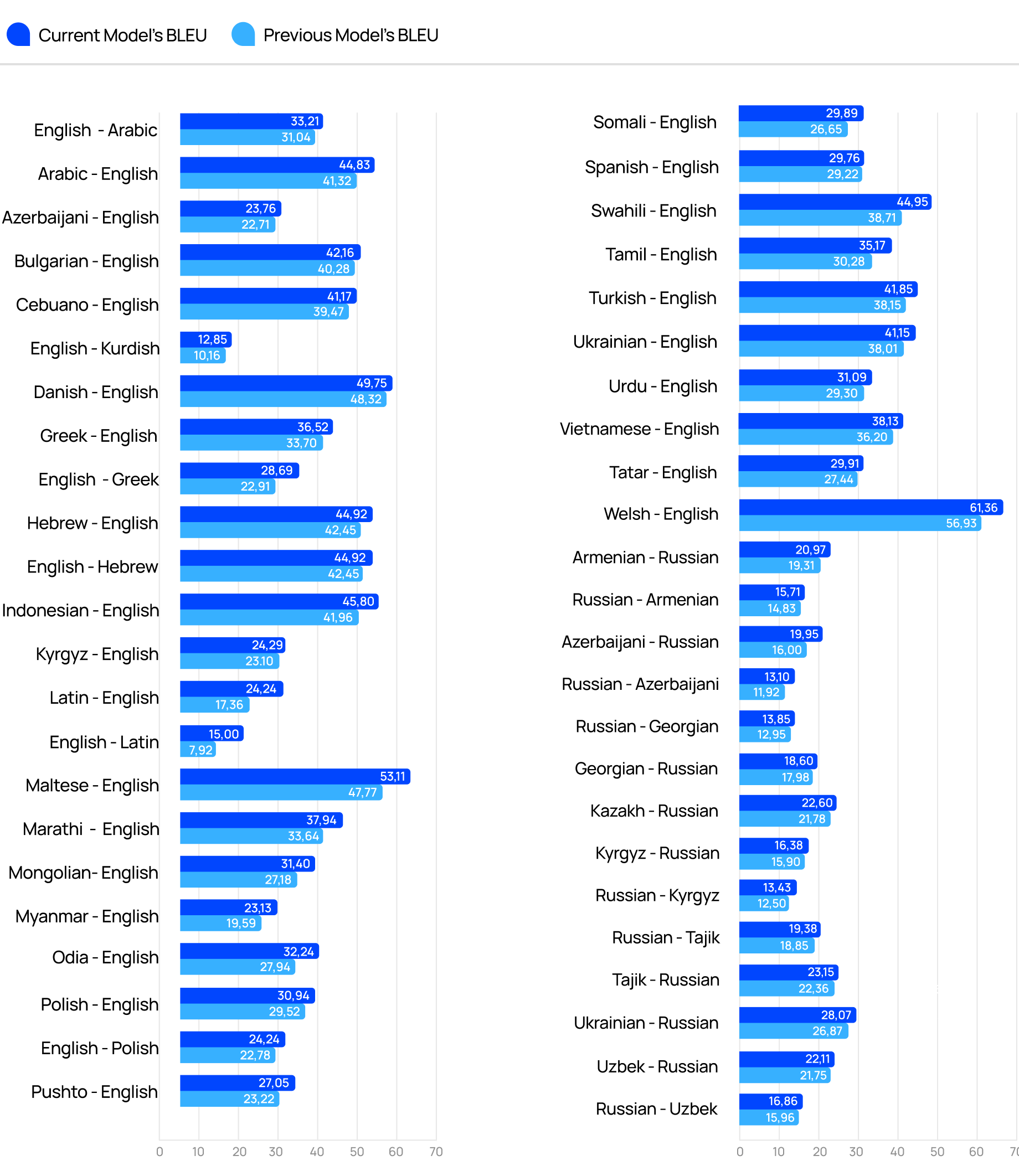The goal of this report is to compare translation quality between old and new language models. New models have not only improved quality but performance and memory usage. We used the BLEU metric and primarily Flores 101 test set in the report.
BLEU is the most popular metrics in the world for machine translation evaluation. Flores 101 test set was released by Facebook Research and has the biggest language pair coverage.
Quality metrics description
BLEU
BLEU is an automatic metric based on n-grams. It measures the precision of n-grams of the machine translation output compared to the reference, weighted by a brevity penalty to punish overly short translations. We use a particular implementation of BLEU, called sacreBLEU. It outputs corpus scores, not segment scores.
References
- Papineni, Kishore, S. Roukos, T. Ward and Wei-Jing Zhu. “Bleu: a Method for Automatic Evaluation of Machine Translation.” ACL (2002).
- Post, Matt. “A Call for Clarity in Reporting BLEU Scores.” WMT (2018).
Improved Language Models
BLEU Metrics

Improved Language Models. December 2023
Language pairs
Note: The lower size of models on the hard drive means the lower consumption of GPU memory which leads to decreased deployment costs. Lower model size has better performance in translation time. The approximate usage of GPU memory is calculated as hard drive model size x 1.2

Conclusion
BLEU stands for Bilingual Evaluation Understudy - a wide spread metric, used for assessing machine translation quality. The present report compares the BLEU scores of the old and new language models with various language pairs. Its major findings are that the new models have higher BLEU scores demonstrating better translation quality. The report also shows improvements in memory usage which leads to lower GPU memory consumption and helps to reduce deployment costs.



